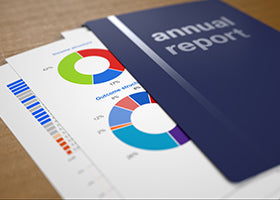
By John Morrison, Chief Financial Officer
The beginning of the year at a public company is inundated with a myriad of tasks which require a significant amount of time. The first task is writing annual performance reviews for each employee. This includes a review and assessment of achievement of goals from the previous year, and the establishing of goals for the new year. These are required to be written in SMART goal format; Specific, Measurable, Achievable, Relevant and Time based. Part of this discipline is to balance the acknowledgment of solid performance with areas that may need improvement. Through implementation of this process at One Stop Systems (OSS), we have been able to improve performance, and as Jim Collins would say, work towards having the right contributors on the bus in the right seats. This is not a one-time assessment, but is repeated at least annually to drive performance and accountability.

The next task is the preparation of the annual operating plan (AOP) or budget that is built on the expectation of achieving certain objectives and performances for the new year. Most importantly, it indicates how the resources of the company, both human and financial, will be deployed to achieve the strategic plan. I know of many companies who expend an inordinate amount of time developing a plan, and once approved, put the plan on the shelf until the end of the year when the company measures annual performance. At OSS, the process of developing the AOP brings alignment within the organization the annual goals and objectives that we will strive to accomplish to drive strategic performance and long-term shareholder value. Since trade-offs must be made, it is also important to identify what the company will not pursue during the year.
Once the AOP is complete, it is time to write the annual report on Form 10K for distribution to the shareholders. The primary information that is required in this report is defined by the Securities and Exchange Commission, and is focused on providing historical information inclusive of comparative financial reporting with the previous years. The narrative and analysis are primarily based upon the change from the prior years’ results and those of the current year. The Form 10K focus is not on disclosure or analysis of the current year results as compared to the AOP. Thus, it is difficult for a shareholder to assess whether the company did better or worse than what the company planned to accomplish. Except for the insights gleaned through management’s guidance and narrative on quarterly earnings calls, or an investors’ day presentations, it is difficult to measure performance compared to the AOP externally and the accomplishment of goals and objectives towards achieving the strategic plan.

Years ago in high school, I was taught two important principles that have influenced my life and are applicable here. The first is: "A goal not written is only a wish", and the other is “When performance is measured, performance improves. When performance is measured and reported, the rate of improvement accelerates”. There is also one other principle I was taught that applies to individual performance and behavior. The saying comes from Elbert Hubbard, who said “People who never do any more than they get paid for, never get paid for any more than they do.”
The true test of a company and its management is the measurement of performance and achievement compared to a pre-established plan. The key word here is measurement. A good goal is measurable and if this important component is missing, the likelihood of achievement is significantly reduced. Measure the performance to goal, visibly report performance and watch for extraordinary results. These principles work for companies and apply to employees as well. By the way, how are you doing on that New Year’s resolution to go to the gym?
Click the buttons below to share this blog post!
Comments will be approved before showing up.


